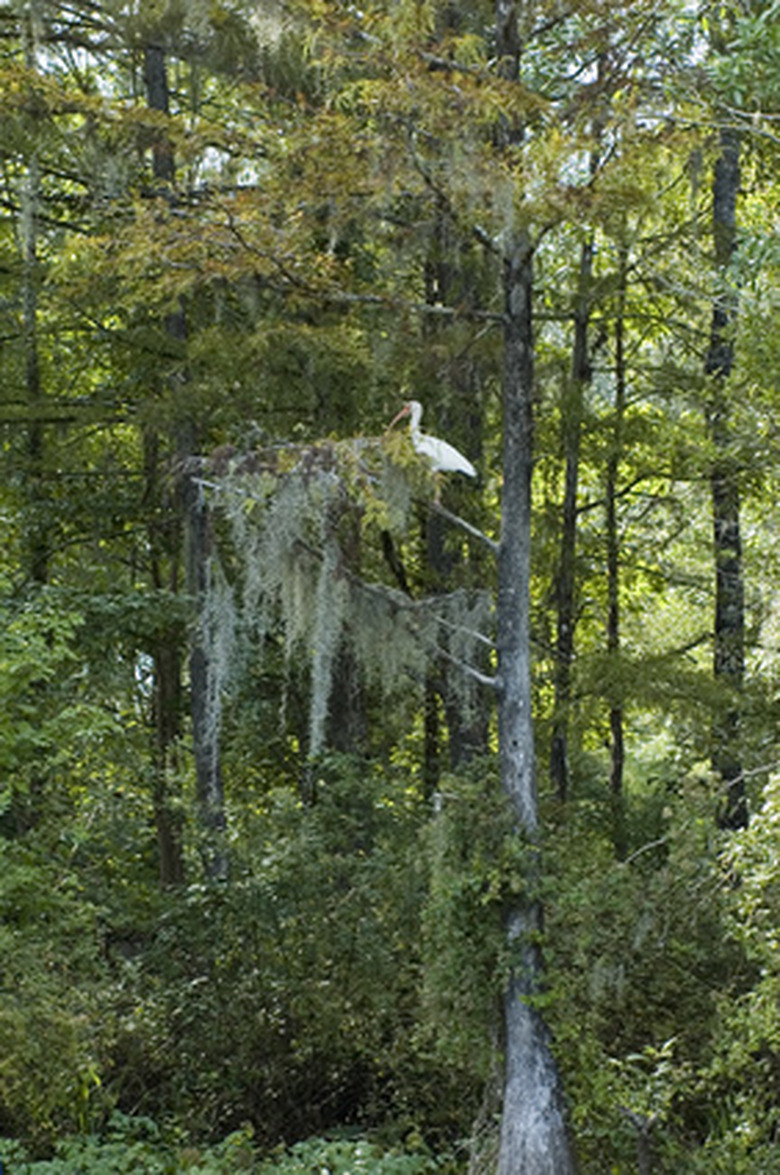A Spray To Kill Spanish Moss In Trees
Spanish moss, sometimes called lace lichen, droops down from the tree it grows on like a fine mesh curtain. You may find Spanish moss in particular abundance on your oak trees, which the organism tends to prefer. It also thrives in warmer, more humid regions. In general, the moss is harmless. If Spanish moss covers your tree, however, you may want to remove it using an anti-fungal spray.
Suitable Spray
A copper sulfate spray will remove Spanish moss from most trees, according to plant pathologists from North Carolina State University. Mix the spray in concentrations of 6 tbsp. of copper sulfate for each gallon of water. Another suitable spray is Bordeaux mixture. This uses quicklime in addition to copper sulfate and water, in quantities of 1 lb. of copper sulfate and 1 lb. of quicklime for every 10 gallons of water, according to information from Oregon State University.
Application
Spray the liquid directly onto the moss around the tree, until the majority is covered and well saturated. Don't spray during the growing season. Wait until late autumn or winter when the tree is dormant so that you reduce the chance of affecting your tree. Use a spray gun to ensure you reach as much of the tree as possible and can direct the liquid into nooks and holes. Repeat the application several times over a few weeks.
Spanish Moss
Unlike some mosses and fungi, Spanish moss doesn't draw any nutrients from the tree on which it lives. This makes it an epiphyte. While it may grow thickly over the branches and leaves, it feeds from water and gasses in the air. The moss tends to favor older trees, often those in the stages of decline.
Problems
While Spanish moss doesn't act as a parasite on the host tree, it can interfere with tree health when present in very large quantities. The moss looks like clumps of fine gray-green hair dangling down from the tree branches. This can pull branches downward on more delicate trees or even trigger snapped limbs. Lots of Spanish moss can also obstruct light to lower leaves and harbor bacteria and moisture in vulnerable parts of the tree.
